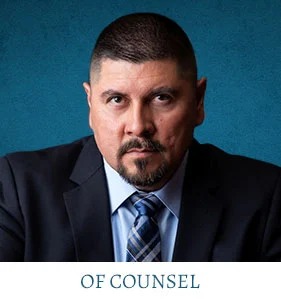CALL (800) 863-5312 TO SPEAK WITH Houston pizza delivery accident lawyers FOR FREE
When most people think of personal injury accidents, they do not immediately think of botched pizza deliveries. At first glance, this article’s title may even seem somewhat humorous, eliciting a quizzical smile of disbelief. Notwithstanding, auto accidents involving delivery services are more common than you may think, and their results can be just as serious—even catastrophic—as other auto accidents. Our Houston pizza delivery accident lawyers have years of experience handling all kinds of personal injury cases, and we are ready to handle yours.
If you or a loved one were involved in an auto accident involving a food delivery, Zinda Law Group is here to help. Call Zinda Law Group at (800) 863-5312 for a 100% free consultation with an experienced Houston injury lawyer today.
Pizza delivery accidents: case illustrations
As we all know, pizza is a ubiquitously popular food in the United States. Whether from Domino’s, Papa John’s, Pizza Hut, or a favorite local pizza joint, most Americans have likely ordered a pizza at some point in their lives. Understandably, when we think “pizza delivery” we do not immediately think “auto accident;” however, pizza delivery accidents are not unheard of.
Over the years, some have led to surprisingly large legal recoveries. Below are three examples.
For a free legal consultation with a pizza delivery accidents lawyer serving Houston, call 800-863-5312
1. Case Illustration No. 1: St. Louis, Missouri (1993)
In 1984, Domino’s Pizza introduced its “30-Minute Pizza Delivery” marketing promise. According to its terms, if the promise was not fulfilled, the customer would then be entitled to a $3 discount. In 1989, one of Domino’s drivers, attempting to fulfill that promise for a customer in St. Louis, Missouri, ran a red light at an intersection and struck Jean Kinder’s car broadside.
Among other things, Kinder alleged that the “30-Minute Delivery” policy caused the delivery driver to act recklessly and thereby contributed to the accident; the jury agreed. The jury verdict awarded more than $78 million to Kinder. Within the week, the popular “30-Minute Delivery” promise was discontinued by Domino’s.
Read more: Janofsky, Michael. “Domino’s Ends Fast-Pizza Pledge After Big Award to Crash Victim.” The New York Times, 22 Dec. 1993.
Pizza Delivery Accident in Houston lawyers near me 800-863-5312
2. Case Illustration No. 2: Madison County, Illinois (2009)
More recently, in 2009, a similar fact pattern unfolded in Madison County, Illinois (coincidentally located just across the Mississippi River from St. Louis). A pizza delivery driver for Bethalto Pizza was completing a delivery when he drove his vehicle into an oncoming lane; he collided with a van driven by Matthew Bruntjen, who suffered extensive injuries. At the time of the accident, Bethalto Pizza was just one of 94 stores operating under Imo’s Franchising. When Bruntjen brought suit against the driver, Bethalto Pizza, and Imo’s Franchising, the jury awarded over $2.25 million.
Read more: Stueve, Christina. “Jury awards more than $2 million to man injured by Imo’s pizza delivery driver.” Madison – St. Clair Record, 13 Dec. 2011; Holleran, Kelly. “Pizza delivery driver causes accident and injuries, suit claims.” Madison – St. Clair Record, 9 June 2010.
Click to contact our Pizza Delivery Driver Accident Lawyers in Texas today
3. Case Illustration No. 3: Beaumont, Texas (2012)
Even more recently—in August 2012—and much closer to home, a fatal pizza delivery crash occurred in Beaumont, about 90 miles northeast of Houston. The accident happened when a Domino’s delivery driver lost control of his vehicle and crashed into another vehicle carrying 65-year-old Ruth Christopher and 70-year-old Davavaram Christopher. Ruth died the next day as a result of the accident, and her husband, Davavaram, suffered permanent traumatic brain injury that has left him unable to communicate; the jury awarded $32 million.
Read more: Lozano, Juan. “Texas Family Awarded $32M in Deadly Domino’s Delivery Crash.” NBC DFW 5, 30 Aug. 2013. Free Consults24/7
Complete a Free Case Evaluation form now
Understanding your legal path toward compensation
The various fact patterns that lead to accidents and injuries are limitless; this remains true in food delivery accident cases. Ultimately, each auto accident is unique and requires the skilled attention of a personal injury attorney. If you were injured in a pizza delivery accident in Houston, our Houston injury attorneys are a phone call away to evaluate your case; that said, this section will briefly walk through and illustrate a number of legal considerations likely to arise in a pizza delivery accident case.
What is Negligence?
Negligence is easily the most common cause of action brought in personal injury cases. To successfully argue negligence, plaintiffs must prove four elements; if any of the elements are not successfully shown, the plaintiff’s case fails. The four elements are:
1. Duty. Defendant owed plaintiff a duty to use reasonable care.
2. Breach. Defendant breached their duty.
3. Harm. Plaintiff suffered a harm.
4. Causation. Defendant’s breach of duty caused plaintiff’s harm.
Conceptually, the elements of negligence are straightforward: The legal basis for the cause of action simply draws on our common-sense intuition that we each should take precautions in our day-to-day activities to avoid causing unnecessary harm to others; this is the “duty to use reasonable care.” However, though the legal concept of “negligence” is theoretically intuitive, the duty to use reasonable care is broad and open-ended. Therefore, its application to each case is heavily context driven.
For example, drawing on Case Illustration No. 2, the complaint filed in Madison County broadly alleged that the delivery driver was negligent because he “drove too fast; failed to maintain control of the vehicle; failed to bring his vehicle to a stop to avoid a collision; allowed himself to become distracted by a cell phone, conversations with other passengers, or his car radio; failed to monitor the flow of traffic around him; and drove a vehicle with uncontained cargo that was liable to strike passengers in the event of a collision . . .” Similarly, drawing from Case Illustration No. 3, the finding of negligence in that case turned largely on the fact that the Beaumont delivery driver was operating his vehicle with worn out tires (including one with no tread), which caused him to lose control.
Further adding to the nuance, many states also employ the concept of “comparative negligence,” which in Texas is referred to as “proportionate responsibility.” Like negligence, it is also simple in theory; it simply means that a plaintiff’s damages should be reduced proportionately by the percentage of their own fault in an accident. For example, if a plaintiff’s damages amount to $1 million but their own behavior contributed 40% to the accident, then the plaintiff may only recover $600,000.
Though conceptually straightforward, the application of “proportionate responsibility” to each case can be factually complex; when and where possible, plaintiffs and defendants will likely fight vigorously as they attempt to pass blame for an accident. Arguing comparative fault—or lack thereof—to a jury requires skilled advocacy by an attorney. Our Houston personal injury lawyers are able and ready to fight for you.
What is Vicarious Liability?
Though less commonly raised, the concept of vicarious liability often goes hand-in-hand with negligence in cases involving delivery drivers. “Vicarious liability” simply refers to the liability of one individual or entity for another individual’s actions. In cases involving delivery drivers, a specific form of vicarious liability known as respondeat superior will likely come into play; this concept specifically allows an employer to be held liable for the negligent conduct of their employees.
In delivery-driver cases, this legal concept is often of pivotal importance for plaintiffs because drivers are almost never able to pay out the damages they incur due to their negligence; plaintiffs seeking compensation must therefore turn to employers. However, because it would be unfair to hold employers liable for the negligence of their employees when it has nothing to do with their employer-employee relationship, vicarious liability in these cases will only apply when the employee’s negligence arose during the “course and scope” of employment.
In cases where vicarious liability may apply, plaintiffs and defendants will argue vigorously to show whether an employee’s negligence was in the course and scope of employment. Indeed, if possible, they will strive to determine whether the negligent actor was an employee at all, since employers can only be vicariously liable for their employees’ negligence and not for that of “independent contractors.”
Damages Awarded in Successful Suits
Damages in pizza delivery accidents are like those in any other personal injury accident. There are generally three types of damages: (1) economic, (2) non-economic, and (3) punitive.
Economic Damages
Economic damages refer to those that can be reduced to a tangible monetary value. Among other things, this may include compensation for:
- past and future medical expenses
- past and future lost wages
- property damages
- out-of-pocket expenses
- lost earning capacity
Non-economic Damages
Non-economic damages refers to those that cannot be reduced to a monetary value. Among other things, they may include compensation for:
- pain
- emotional anguish
- humiliation
- reputational damage
- loss of enjoyment of activities
- worsening of prior injuries
- the loss of a loved one’s companionship (“loss of consortium”)
Though economic and non-economic damages are conceptually distinct, the facts substantiating each in any given case are likely to overlap. Ultimately, the jury has a great deal of discretion in determining damages; indeed, to many observers, jury findings often seem quite arbitrary. To draw further from Case Illustration No. 2, the Missouri jury in that case itemized its damages findings as follows:
- Disfigurement resulting from injury: $20,000
- Disability experienced: $750,000
- Increased risk of future seizures resulting from the injury: $0
- Emotional distress experienced: $100,000
- Pain and suffering experienced: $150,000
- Necessary medical care, treatment, and services: $657,000.68
- Value of earnings lost: $607,500
- Reasonable expense of necessary help: $0
- TOTAL: $2,284,500.68
Punitive Damages
Where economic and non-economic damages are meant to compensate a suffering party, punitive damages are meant to punish the culpable actor. Generally, this form of damages is heavily disfavored by courts under the rationale that punishment is a prerogative of criminal law, whereas the civil law governing personal injury is instead concerned with restoring injured parties back to their pre-accident condition, known as “making the party whole.” However, in cases of serious misbehavior, courts may allow punitive damages.
When courts do allow punitive damages, the sums can be quite large. These sums are often meant to punish the wrongdoer for their past acts as well as deter them from repeating those acts in the future. This is particularly common when the kind of behavior in question is unusually dangerous or presents an especially high risk to a large portion of the population.
For example, in Case Illustration No. 1, Domino’s operated thousands of locations across the nation in 1993—there are about 20% more today. The “30-Minute Pizza Delivery” policy encouraged delivery drivers across the nation to operate their vehicles recklessly; therefore, though the jury awarded economic and non-economic damages in the amount of $750,000 to be apportioned between the driver and Domino’s, the jury also awarded $78 million in punitive damages to be paid specifically by Domino’s. The deterrent impact of this award was immediate, since Domino’s quickly discontinued its 30-minute delivery promise.
Regardless of whether your case ultimately qualifies for punitive damages, skilled advocacy is required to sway the jury’s judgment. If you were injured in a pizza delivery accident in Houston, call us today for a free case evaluation with an experienced Houston injury attorney.
CASE RESULTS
Statute of Limitations
One of the simplest ways an injured party may take a proactive role in their case is simply by being familiar with the governing statute of limitations in their state. A statute of limitations sets a deadline after which a plaintiff can no longer bring a case seeking compensation for their personal injuries; this deadline is all important because, once it passes, it acts as a virtually absolute bar against your case. Each state maintains a statute of limitations for cases arising within their borders.
In Texas, the statute of limitations is set at two years after the date of the accident; in other words, once two years pass after the date of your accident, you can no longer bring your case. Therefore, time is of the essence, and you should not hesitate to discuss your accident with an attorney near you as soon as possible. Our Houston pizza delivery accident lawyers are ready to evaluate your case and strategize your path toward maximum compensation; call us today for a 100% free consultation.
Read more: Tex. Civ. Prac. & Rem. Code § 16.003, Two-Year Limitations Period
OUR Houston pizza delivery accident lawyers CAN HELP
Food delivery services have been around for decades, and though business models have evolved over the years, speedy food delivery remains ever popular. Yet, as with any scenario involving vehicles on roads and highways, the risk of accident and injury remains ever present. Though we do not immediately think of pizza deliveries when we think of personal injury accidents, the frequency and impact of food delivery accidents should not be underestimated.
If you or a loved one was injured by a food delivery service, call Zinda Law Group at (800) 863-5312 for a 100% free case evaluation with one of our personal injury lawyers in Houston. Our clients pay nothing unless we win their case; that is our No Win, No Fee Guarantee. Tell us about your case, and we will tell you how we can help.
Meetings with attorneys are available by appointment only.
Our Awards
AWARDED TO JOHN C. (JACK) ZINDA BY THE NATIONAL TRIAL LAWYERS ASSOCIATION (2016-2020)
AWARDED TO JOHN C. (JACK) ZINDA (2009, 2011-2012, 2014-2021), & NEIL SOLOMON (2020-2021)
AWARDED TO JACK ZINDA (2016-2020)
LIFETIME MEMBERS JOHN C. (JACK) ZINDA
Call or text 800-863-5312 or complete a Free Case Evaluation form


























